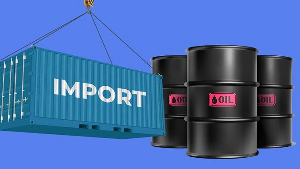In the global commodity market, prices of crude oil fell back below $80 per barrel early on Friday despite ravaging geopolitical tensions.
The market reacted to decision of the Organisation of Petroleum Exporting Countries (OPEC) and allied members (OPEC+) decision to maintain status quo on output at the just concluded meeting.
Despite geopolitical tensions in the Middle East, the commodities complex came under pressure yesterday with a weaker-than-expected US manufacturing index reading, ING commodities strategist Warren Patterson and Ewa Manthey, saying this will only add to demand worries.
Analysts maintained that geopolitical risks remain an upside risk for energy market as the OPEC+ recommends no change to oil policy at the conclusion on its meeting yesterday.
ICE Brent fell back below US$80 despite geopolitical tensions still simmering in the Middle East after the assassination of the political leader of Hamas.
As has been the case since 7 October 2023, while tensions have built, it has had little to no impact on oil supply – the biggest disruption, according to ING has been the rerouting of tankers to avoid the Red Sea given ongoing Houthi attacks on vessels.
However, the more Iran gets directly involved, the more risks of oil supply disruption grow. Another factor which has provided some comfort to the market in recent months has been the spare production capacity that OPEC sits on.
For now, analysts said the market continues to try to balance these supply risks with the negative sentiment driven by demand concerns.
Weaker Chinese demand has been on the radar for some time now and weaker-than-expected macro data from the US will only add to these demand concerns. We may be at a stage where bad news is no longer good news for risk assets, evident in yesterday’s price action in oil, metals and equities, following weak US data.
The OPEC+ recommended no changes to output policy for the wider group. In the statement from OPEC, the Joint Ministerial Monitoring Committee reiterated that the gradual phase-out of supply cuts from October 2024 could be paused or reversed depending on market conditions.
European natural gas prices rallied to their highest level this year with TTF briefly trading above EUR37/MWh. Tensions in the Middle East would have provided a boost, while LNG flows into Europe have been lower in recent months.
Spot Asian LNG has traded at a premium to TTF basically since early March (and this spread has trended higher over this period), supporting a redirecting of spot LNG from Europe to Asia. However, EU gas storage is more than 85% full, above the five-year average of 76% full.
In the US, Henry Hub front month futures sold off, settling a little more than 3.3% lower, which saw prices close back below US$2/MMBtu.
The weakness comes despite the EIA’s weekly storage report showing that US natural gas inventories increased by 18Bcf, lower than expectations for a 31Bcf build and also below the five-year average build of 33 Bcf for this time of year.
Click to view details



Business News of Friday, 2 August 2024
Source: dmarketforces.com

















